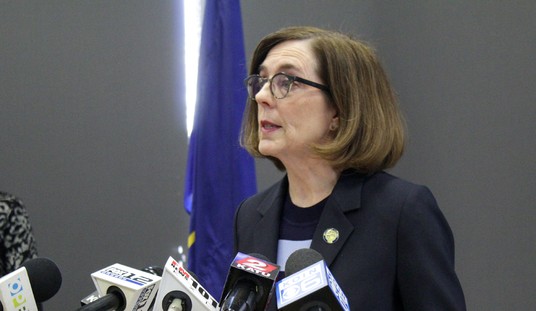The wildfires in California threatening populated areas seem to grab far more of the media’s attention, but the state of Oregon is also burning. The Bootleg fire now covers more than 500 square miles in a sparsely populated section of the state, burning down old-growth forests and wildlife reserves. More lightning storms are expected there through the rest of the week, so officials are bracing for additional fires to pop up. They’re also asking for outside resources to be on stand by in case they need to call for even more assistance in battling them. But at least some people involved in the process are also suggesting that perhaps these fires are not only unavoidable but needed to maintain the balance of nature. It’s a politically unpopular viewpoint, but there’s a lot of science to back it up. (Associated Press)
The threat of thunderstorms and lightning has prompted officials in fire-ravaged Oregon to ask for help from outside the Pacific Northwest to prepare for additional blazes as many resources are already devoted to a massive fire in the state that has grown to a third the size of Rhode Island.
The 537-square-mile (1,391-square-kilometer) Bootleg Fire is burning 300 miles (483 kilometers) southeast of Portland in and around the Fremont-Winema National Forest, a vast expanse of old-growth forest, lakes and wildlife refuges. Evacuations and property losses have been minimal compared with much smaller blazes in densely populated areas of California.
But eyeing how the Bootleg Fire — fueled by extreme weather — keeps growing by miles each day, officials with the Rogue River-Siskiyou National Forest in southwest Oregon are asking for more outside crews to be ready should there be a surge in fire activity there.
We still have officials pointing the finger at climate change for these fires. (When they aren’t blaming utility companies with older, faulty power lines.) But the reality is that the western part of the country has been burning on a regular basis since long before the first humans set foot here. The biggest fire risk isn’t the larger trees themselves, which are actually rather difficult to set on fire from a single heat source. It’s the underbrush that tends to clog the forests, particularly along the edges. When those plants dry up they act like kindling.
In California, there have been repeated calls for funding to clear out tinder on a massive scale to prevent the larger fires from starting in the first place. But that’s an almost impossible task given the expanse of land being discussed. The eastern part of Oregon is also vast, with large swaths of forest with no roads providing access to the fires.
So what’s to be done? Maybe the answer is… nothing. There are plenty of ecologists who advocate for simply allowing wildfires to burn unless and until they reach the edge of larger human settlements. Those fires clear out the underbrush far more effectively than humans with axes and shovels ever could. And they open up the land for new saplings to grow even as the canopy of the older trees burns away.
Science shows us that nature has adapted to wildfires over the span of evolutionary time. One fun fact is found with the lifecycle of the giant sequoias of the pacific northwest. While the trees can live to be more than 3,000 years old, they require forest fires to be able to reproduce. Their pine cones don’t open and release their seeds until they are exposed to temperatures only found during a raging fire. That didn’t happen by accident. The trees evolved to survive massive forest fires because those forests have been burning for as long as there have been forests.
Considering how much money is spent by western states on battling wildfires and clearing brush, perhaps a new approach is called for. Draw some lines in the sand where human habitation begins and start digging ditches and building barriers or whatever it is you have to do to stop a fire from going further. And as for the rest of the forested areas… let them burn. You’ll probably end up with more trees and fewer fires for years to come.








Join the conversation as a VIP Member